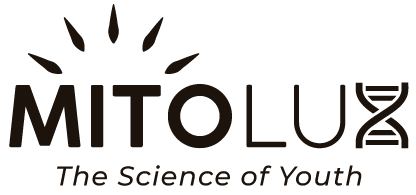In our previous discussion, we explored various wavelengths from red to near-infrared light and their potential benefits for human health. In this continuation, we'll delve deeper into some of the lesser-known wavelengths - 910nm, 940nm, and 1064nm. Let’s explore these wavelengths and their scientifically-backed uses, penetration depths, and even available products on the market.
1. 910 nm (Near-Infrared Light)
Benefits: Similar to other NIR wavelengths, 910 nm is known for its anti-inflammatory properties and is also believed to promote cell growth and rejuvenation.
Studies and Evidence: Research published in the Journal of Clinical Laser Medicine & Surgery revealed that 910 nm light, when used post-surgery, could accelerate the wound healing process.
Products: Several light therapy devices, particularly those aimed at wound healing and pain management, use 910 nm as one of their primary wavelengths.
Uses: Primarily used for wound healing, pain management, and skin rejuvenation.
2. 940 nm (Near-Infrared Light)
Benefits: This wavelength has been researched for its ability to aid in muscle recovery and reduce joint pain, offering potential benefits for athletes and those with musculoskeletal disorders.
Studies and Evidence: A study published in Lasers in Medical Science illustrated that 940 nm could be effective in improving muscle performance and decreasing muscle damage in athletes.
Products: Various hand-held light therapy devices and professional-grade panels offer 940 nm as one of their featured wavelengths.
Uses: Primarily employed in muscle recovery, reducing joint pain, and promoting overall muscle health.
3. 1064 nm (Near-Infrared Light)
Benefits: 1064 nm has a deeper penetration than many other NIR wavelengths, making it particularly useful for targeting deeper tissues, bones, and joints.
Studies and Evidence: A study in the Journal of Biomedical Optics showcased the potential of 1064 nm light in treating deep tissue injuries and bone health.
Products: Due to its deep penetration capabilities, 1064 nm is often found in devices that target deep tissue injuries or bone-related concerns.
Wavelengths and Penetration Depth
The depth of penetration of light therapy wavelengths typically increases as one moves from visible red light to the near-infrared spectrum. Here's a generalized overview based on available literature:
- Red Light (630-700 nm): Superficial penetration, mainly targeting skin layers.
- NIR (700-1000 nm): Deeper penetration, reaching muscles, joints, and some internal structures.
- 1064 nm: One of the deepest penetrating wavelengths, capable of reaching deep tissues, bones, and joints.
Conclusion
As the scientific community continues to unlock the potential of different light therapy wavelengths, we come to realize the breadth of benefits they offer. From the skin-rejuvenating properties of red light to the deep-tissue healing capabilities of certain NIR wavelengths, there's much to be explored and harnessed for better health and well-being.
Whether you're considering purchasing a light therapy product or seeking treatment, it's essential to be informed and consult professionals to ensure you're making the best choices for your health.
Disclaimer: This article is for informational purposes only and does not constitute medical advice. Always consult with a healthcare professional for medical concerns.


